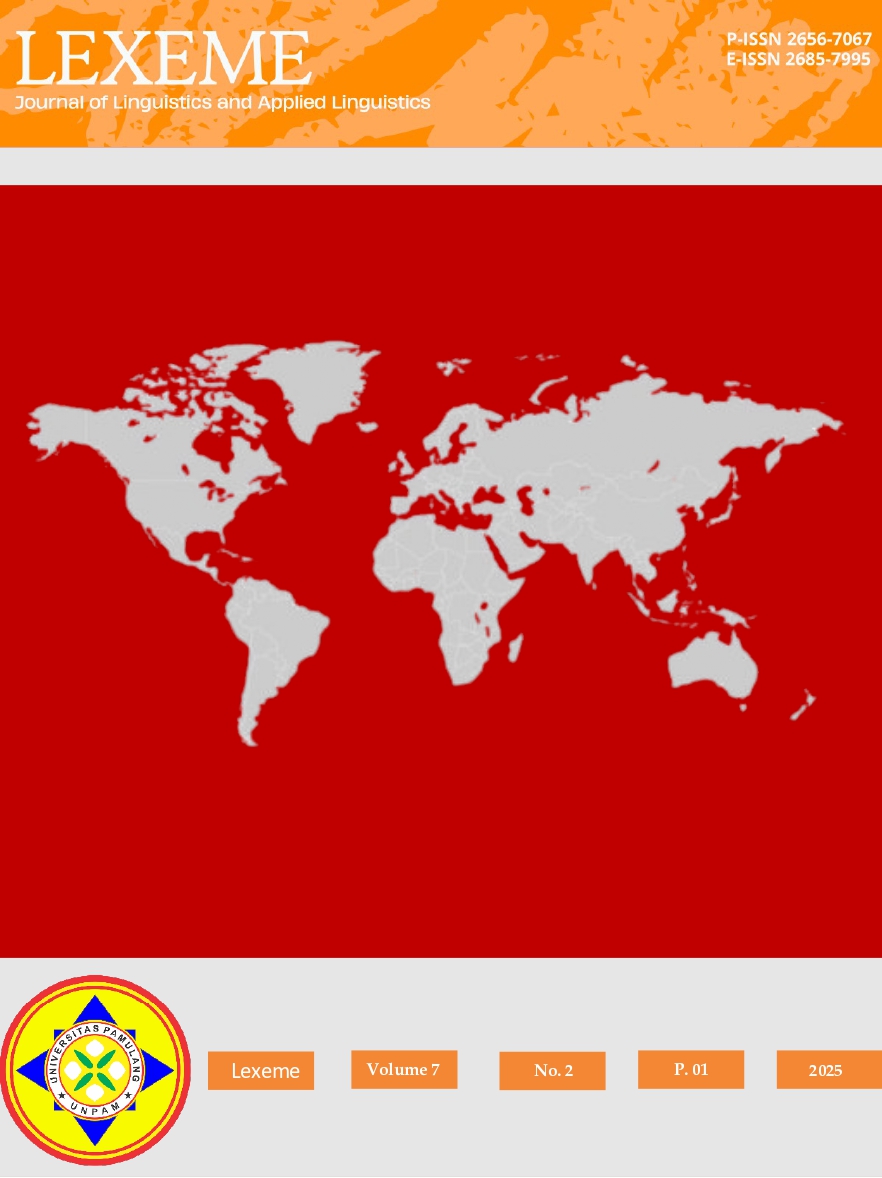A Comparative Analysis of the Evolution of Pidgin and Creole Languages Globally
DOI:
https://doi.org/10.32493/ljlal.v7i1.46250Keywords:
creole, culture, evolution, global, pidginAbstract
Pidgins and creoles are two unique language forms, born out of linguistic contact in various global contexts, including trade, colonialism and migration. Pidgins evolved as simple means of communication between speakers of different languages, while creoles emerged when pidgins became the mother tongue of certain communities, expanding their grammatical complexity and vocabulary. The aim of the research is to analyze the evolution of pidgin and creole languages globally, including the problems, procedures, relationships of activities, attitudes, views, and influences of certain phenomena. The research compares the evolution of pidgins and creoles globally, exploring the processes of pidginization, creolization, and their distribution and characteristics in different regions. It highlights the social and linguistic dynamics underlying the formation of these languages, while demonstrating the significant role of pidgins and creoles in understanding the evolution of human language. This research uses a qualitative approach with descriptive methods to accurately describe facts and situations in society. The research methods include a literature study, where researchers collect data from secondary sources such as books and journals, as well as a historical approach that reviews the development of pidgins and creoles in the context of trade, colonialism and migration. This approach allowed for an in-depth exploration of relevant linguistic and socio-cultural data. The results of this analysis provide deep insights into the relationship between language, culture and history in a changing global context.
References
Bakker, P. (2008). Pidgins Versus Creoles and Pidgincreoles. Blackwell Publishing.
Balogun, T. A. (2012). In defense of Nigerian pidgin. Journal of Language and Culture, 4 (5). http://www.academicjournals.org/JL.C
Botha, R. (2006). Pidgin languages as a putative window on language evolution. Language & Communication, 26 (1), 1–14. https://doi.org/10.1016/j.langcom.2005.07.001
Chacon, T.C. (2022). Language Change and Lingusitic Diversity: Studies in Honour of Lyle Campbell. Endinburgh University Press.
Jayadi, M. S., Wahyudin, D., & Suriani, E. (2024). Jejak Sejarah Linguistik dalam Perkembangan Ilmu Bahasa: Studi Tokoh-Tokoh Linguistik Terkemuka Dan Temuan. Social: Jurnal Inovasi Pendidikan IPS, 4(4), 558–573. https://doi.org/10.51878/social.v4i4.3793
Khan, I. J. (2021). Pidgin and Creole: Concept, Origin, and Evolution. British Journal of Arts and Humanities. 3(6) 164–170. https://doi.org/10.34104/bjah.02101640170
Kouwenberg, S. (2020). Are creoles a special type of language? Methodological issues in new approaches to an old question. John Benjamins Publishing. https://doi.org/10.1075/coll.57.04kou
Mufwene, S. S. (1998). The Evolution of Language: Hints From Creoles and Pidgins. Journal of Pidgin and Creole Languages, 13(1), 213–213. https://doi.org/10.1075/jpcl.13.1.22sal
Obi, E. (2014). Language Attitude and Nigerian Pidgin. Afrrev Ijah: An International Journal of Arts and Humanities, 3(4), 34–46. https://doi.org/10.4314/ijah.v3i4.3
Purawinangun, I. A., & Wiharja, I. A. (2019). Bahasa Pijin Mahasiswa Thailand di Kota Tanggerang Provinsi Banten. Silampari Bisa: Jurnal Penelitian Pendidikan Bahasa Indonesia, Daerah, dan Asing, 2(1), 108–117. https://doi.org/10.31540/silamparibisa.v2i1.333
Rickford, J. R., & McWhorter, J. (2017). Language Contact and Language Generation: Pidgins and Creoles. In F. Coulmas (Ed.), The Handbook of Sociolinguistics (1st ed., pp. 238–256). Wiley. https://doi.org/10.1002/9781405166256.ch14
Santoso, S. (2010). Bahasa Pidgin dan Kreol. https://doi.org/www.sastra33.co.cc
Siegel, J. (2005). Literacy in Pidgin and Creole Languages. Current Issues in Language Planning, 6(2), 143–163. https://doi.org/10.1080/14664200508668278
Srisudarso dkk, M. (2024). Lingusitik Umum. PT. Mafy Media Literasi Indonesia.
Suraiya, S. (2020). Pidgins and Creoles: Birth of Languages. Jurnal Adabiya, 19(1), 57. https://doi.org/10.22373/adabiya.v19i1.7485
Syahrizal, H., & Jailani, M. S. (2023). Jenis-Jenis Penelitian Dalam Penelitian Kuantitatif dan Kualitatif. Jurnal QOSIM Jurnal Pendidikan Sosial & Humaniora, 1(1), 13–23. https://doi.org/10.61104/jq.v1i1.49
Yakpo, K. (2020). Sociolinguistic characteristics of the English-lexifier contact languages of West Africa. John Benjamins Publishing Company, 65. 61-84https://doi.org/10.1075/coll.57.02yak
Yakpo, K. (2024). West African Pidgin: World Language Against the Grain. Africa Spectrum, 59(2), 180–203. https://doi.org/10.1177/00020397241263364
Downloads
Published
How to Cite
Issue
Section
License
Copyright (c) 2025 Namiyah Fitriani, Fatma Dewi Adjiji, Djoko Susanto

This work is licensed under a Creative Commons Attribution-ShareAlike 4.0 International License.







